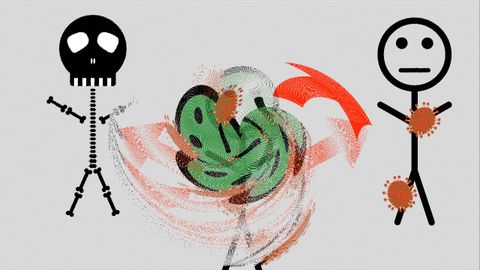
Subtitles & vocabulary
Americapox: The Missing Plague
00
林宜悉 posted on 2020/03/28Save
Video vocabulary
vulnerable
US /ˈvʌlnərəbəl/
・
UK /ˈvʌlnərəbl/
- Adjective
- Being open to attack or damage
- Being easily harmed, hurt, or wounded
B1
More chronic
US /ˈkrɑnɪk/
・
UK /'krɒnɪk/
- Adjective
- Always or often doing something, e.g. lying
- (Of disease) over a long time; serious
B1
More immune
US /ɪˈmjoon/
・
UK /ɪˈmju:n/
- Adjective
- Having a special protection from, e.g. the law
- Protected against a particular disease or condition because of antibodies or vaccination.
B1
More devastating
US
・
UK
- Transitive Verb
- To cause extensive destruction or ruin utterly
- Adjective
- Destroying everything; very shocking
- Causing great emotional pain or shock.
B1
More Use Energy
Unlock All Vocabulary
Unlock pronunciation, explanations, and filters
